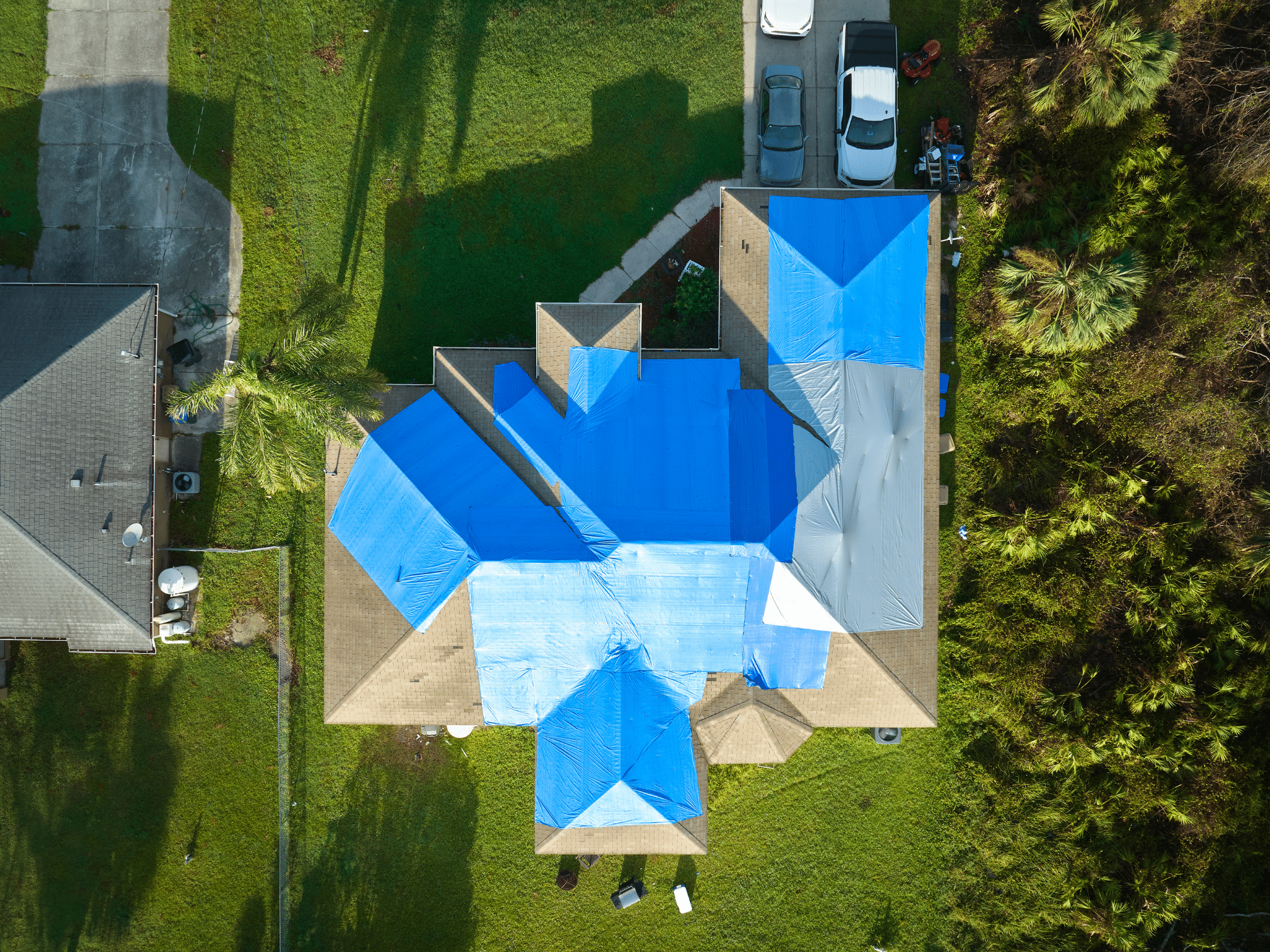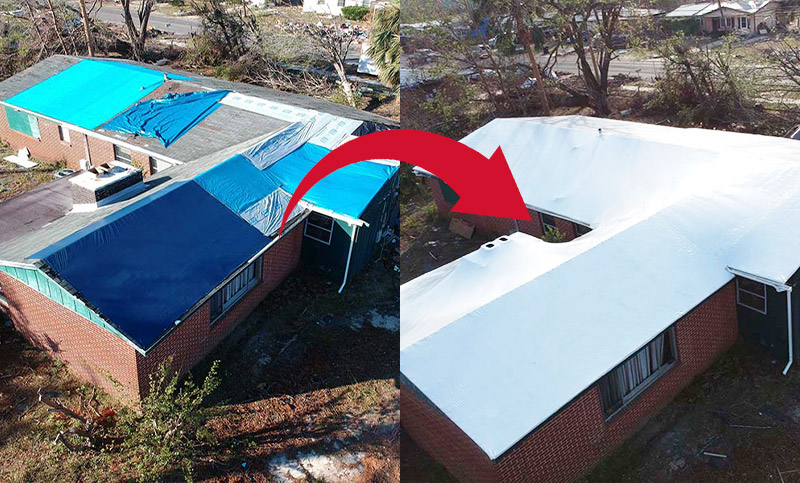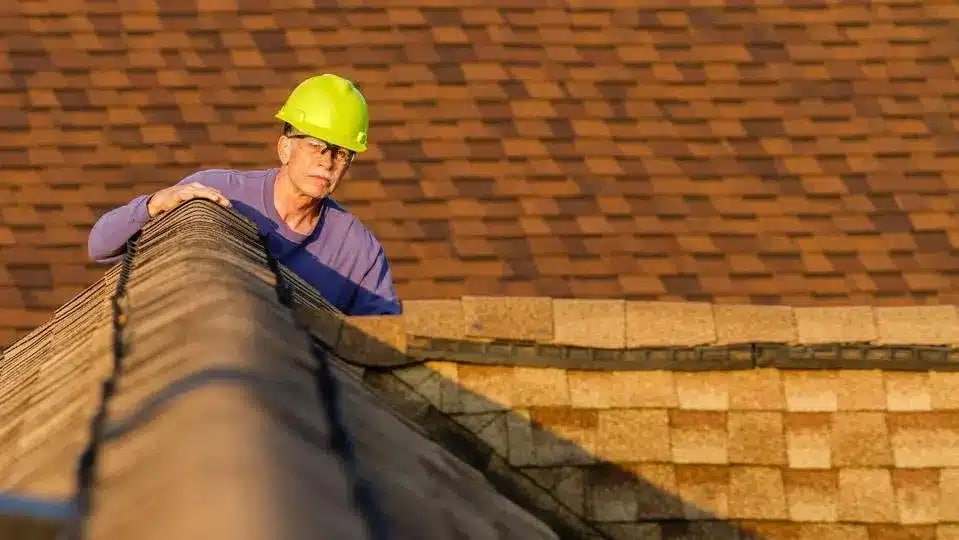Maximize the Lifespan of a Roof Tarp Effectively
A roof tarp is an essential tool for protecting your property from the elements, particularly after storm damage or during roof repairs. While it may seem like a temporary fix, the quality and care of your roof tarp can significantly impact its effectiveness and longevity. Understanding how to maximize the lifespan of a roof tarp can save you time, money, and potential damage to your home. Sugar Land Roofing, with its expertise in roof protection services, provides valuable insights into maintaining the durability of your roof tarp to ensure your home remains safe and secure.

Understanding the Lifespan of a Roof Tarp
The lifespan of a roof tarp varies depending on several factors, including the material quality, environmental conditions, and how well it’s maintained. Typically, a high-quality roof tarp, such as those provided by Sugar Land Roofing, can last anywhere from two to twelve months, depending on usage. Here’s what you need to know about what influences the lifespan of a roof tarp:
- Material Quality: The most durable tarps are made from high-density polyethylene (HDPE) or reinforced plastic, which are designed to withstand harsh weather conditions. Investing in a high-quality tarp ensures better protection and longer lifespan.
- Weather Conditions: Tarps are exposed to various weather elements such as UV rays, rain, wind, and snow. Prolonged exposure to sunlight can cause the tarp to degrade faster, while heavy winds can loosen the tarp, leading to tears and damage.
- Installation: Proper installation is critical in extending the lifespan of a roof tarp. If the tarp is not securely fastened, it can be easily damaged by the wind or water, reducing its effectiveness and longevity.
Proper Installation Techniques for Extending Tarp Lifespan
Proper installation is the first step in ensuring your roof tarp lasts as long as possible. Incorrect installation can lead to early wear and tear, reducing the tarp’s effectiveness. Here’s a step-by-step guide on how to correctly install a roof tarp:
- Preparation: Before installing the tarp, clear any debris from the roof to ensure a clean surface. This helps prevent punctures or tears during installation.
- Positioning: Lay the tarp flat over the damaged area, ensuring it extends beyond the damaged section by at least 3 to 4 feet. This overlap will provide additional protection against leaks.
- Securing the Tarp: Use wooden strips or sandbags to secure the edges of the tarp. Place the strips along the edge of the tarp and nail them into the roof to keep the tarp from blowing away in high winds. Be careful not to puncture the tarp itself.
- Final Check: Once the tarp is secured, check for any loose edges or wrinkles. These can become weak points where the tarp may tear or lift in the wind.

Common Installation Mistakes to Avoid
- Overstretching the Tarp: Overstretching can cause the tarp to tear more easily, especially under pressure from wind or rain.
- Insufficient Overlap: Failing to provide enough overlap can result in water seeping under the tarp, leading to further damage.
Hiring a professional service like Sugar Land Roofing for tarp installation ensures that the job is done correctly, maximizing the tarp’s lifespan and providing reliable protection.
Maintenance Tips to Maximize Roof Tarp Longevity
Regular maintenance of your roof tarp is essential to extend its lifespan and ensure it remains effective. Here are some key maintenance tips to help you get the most out of your roof tarp:
- Routine Inspections: Regularly check the tarp for signs of wear and tear, especially after severe weather. Look for holes, tears, or areas where the tarp may have loosened.
- Cleaning the Tarp: Dirt and debris can accumulate on the tarp, which can cause abrasions and lead to tears. Gently clean the tarp with water and a soft brush to remove any buildup.
- Securing Loose Edges: Over time, the tarp may shift or loosen. Regularly check and re-secure the edges with wooden strips or sandbags to prevent the tarp from blowing away.
- Monitor Fasteners: Ensure that the nails or strips used to secure the tarp are still in place and holding the tarp tightly. Replace any that have come loose or corroded.
Recommended Maintenance Schedule
- Weekly Checks: Perform a quick visual inspection to check for obvious signs of damage.
- Monthly Detailed Inspections: Conduct a more thorough inspection, including checking the integrity of the fasteners and edges.
By following these maintenance tips, you can significantly extend the life of your roof tarp, keeping your property protected for longer.

The Role of Weather in Roof Tarp Longevity
Weather plays a crucial role in determining how long your roof tarp will last. Different weather conditions have varying impacts on the tarp’s durability:
- Sun Exposure: Prolonged exposure to UV rays can weaken the tarp material, making it more susceptible to tears. Consider using tarps with UV protection to mitigate this issue.
- Heavy Rain: Water pooling on top of the tarp can add extra weight, potentially causing it to sag or tear. Ensure the tarp is tightly secured to prevent water accumulation.
- Strong Winds: Winds can loosen the tarp, leading to it flapping or tearing. Secure all edges tightly and use additional fasteners if necessary during windy conditions.
- Snow and Ice: The weight of snow and ice can put a lot of pressure on the tarp. Regularly clear snow from the tarp to prevent it from stretching or tearing.
Best Practices for Tarp Care During Extreme Weather
- Pre-Storm Preparation: Ensure the tarp is securely fastened and free of any tears before a storm hits.
- Post-Storm Inspection: After a storm, inspect the tarp for any damage and make necessary repairs immediately.
When to Replace Your Roof Tarp
Knowing when to replace your roof tarp is just as important as knowing how to maintain it. Using a damaged tarp can lead to water damage and other issues. Here are some signs that it’s time to replace your roof tarp:
- Visible Tears and Holes: If the tarp has multiple or large holes, it’s no longer effective in protecting your roof.
- Frayed Edges: Frayed edges are a sign of wear and tear. Once the edges start to fray, the tarp will likely start to tear soon.
- Water Leaks: If you notice water leaking through the tarp, it’s time for a replacement. Even small leaks can lead to significant damage over time.
- Discoloration or Brittle Texture: Over time, the tarp may become discolored or feel brittle. These are signs that the material has degraded and needs to be replaced.
Risks of Using a Damaged Tarp
- Water Damage: A damaged tarp can allow water to seep through, leading to potential structural damage to your home.
- Increased Repair Costs: Delaying the replacement of a worn tarp can result in more extensive and costly repairs later on.
Sugar Land Roofing provides timely roof tarp replacements to ensure your home remains protected without interruption. Trust their professional services to handle the task efficiently and effectively.

Common FAQs about Roof Tarp Lifespan
1. How long can a roof tarp last?
A high-quality roof tarp can last anywhere from two to twelve months, depending on the material, weather conditions, and how well it is maintained.
2. Can I install a roof tarp myself?
While you can install a roof tarp yourself, it’s recommended to hire professionals like Sugar Land Roofing to ensure proper installation and maximize the tarp’s lifespan.
3. What should I do if my roof tarp is damaged?
If your roof tarp is damaged, you should replace it as soon as possible to prevent further damage to your roof. Regular inspections can help you catch issues early.
4. How do I know when to replace my roof tarp?
Replace your roof tarp if you notice significant tears, holes, frayed edges, or if it has become discolored or brittle.
5. Can weather affect the lifespan of my roof tarp?
Yes, weather conditions such as UV exposure, heavy rain, strong winds, and snow can all impact the lifespan of your roof tarp. Regular maintenance can help mitigate these effects.
6. Why is it important to maintain my roof tarp?
Maintaining your roof tarp ensures it remains effective in protecting your home, preventing water damage, and extending the tarp’s overall lifespan.
Conclusion
Maximizing the lifespan of a roof tarp requires proper installation, regular maintenance, and timely replacement. By following the tips provided by Sugar Land Roofing, you can ensure that your roof tarp remains an effective barrier against the elements, protecting your home and saving you from costly repairs. Don’t hesitate to reach out to Sugar Land Roofing for professional advice and services to keep your home safe and secure.

 (832) 944-7663
(832) 944-7663